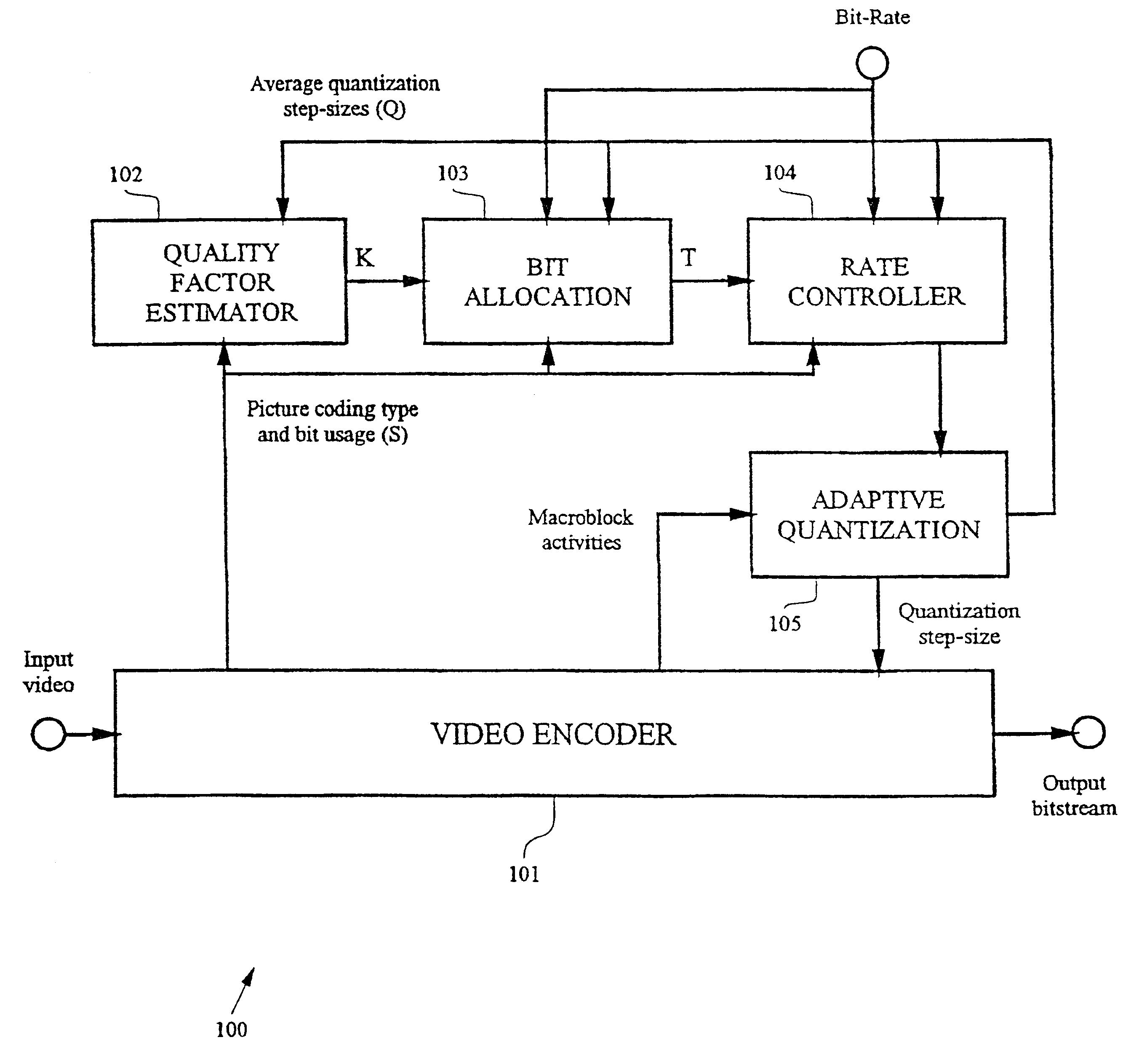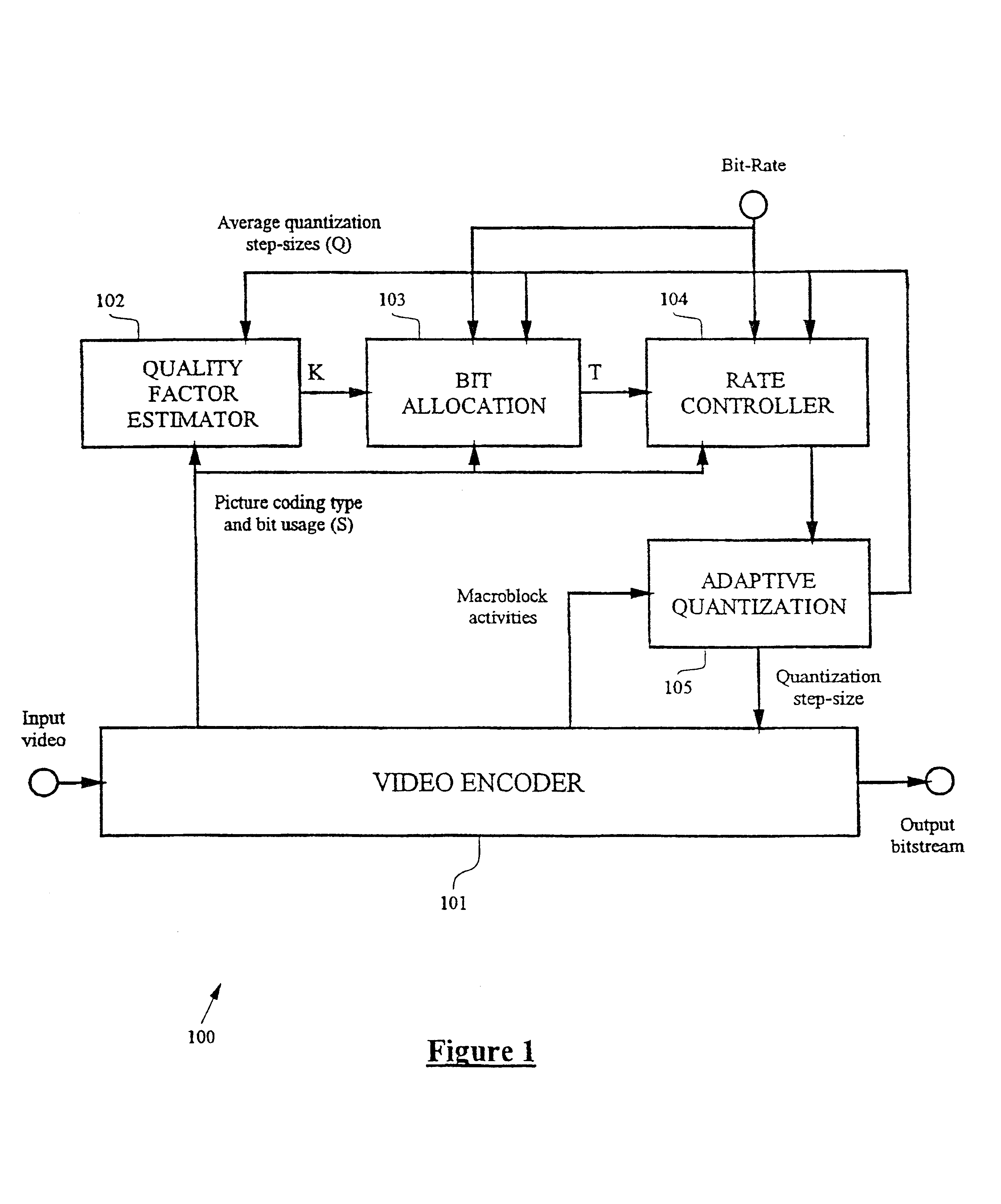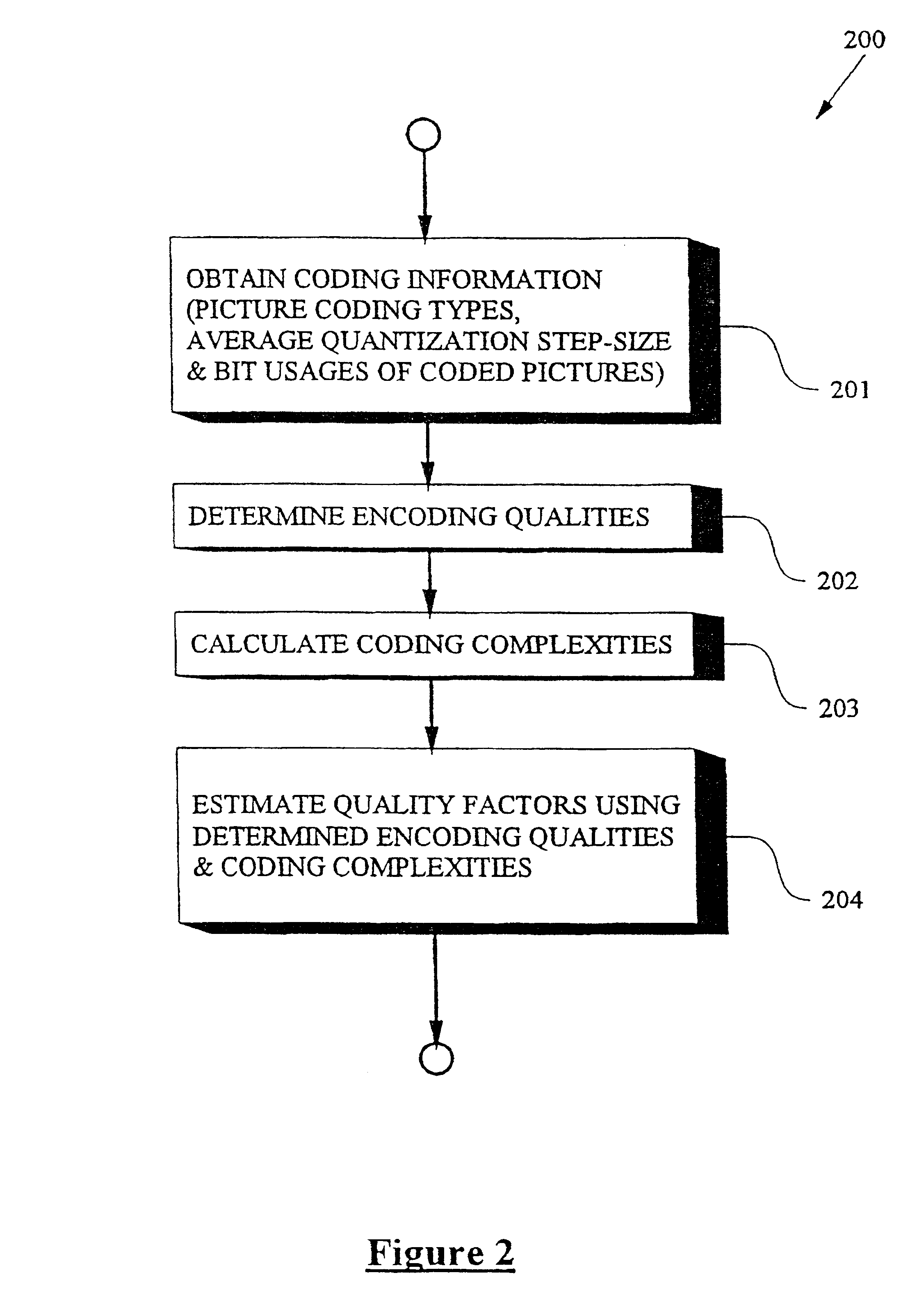Sequence adaptive bit allocation for pictures encoding
a picture sequence and adaptive bit allocation technology, applied in the field of sequence adaptive bit allocation for pictures, can solve the problems that methods may have significant impact on implementation costs, and achieve the effect of improving bit allocation
- Summary
- Abstract
- Description
- Claims
- Application Information
AI Technical Summary
Benefits of technology
Problems solved by technology
Method used
Image
Examples
Embodiment Construction
[0034]FIG. 1 illustrates a video encoding system 100 with sequence adaptive bit allocation according to an embodiment of the present invention. An input video picture sequence is encoded by a video encoder 101 to produce a compressed output bitstream which may be transmitted to an external decoder via a communication channel or recorded on digital storage media for playback applications. Each picture from the input video sequence is coded according to its assigned picture coding type (I-, P-, or B-picture). A group-of-pictures (GOP) is formed starting with an I-picture, and followed by possibly sets of P-pictures and B-pictures.
[0035]Typically, the video encoder 101 utilizes motion estimation, motion compensation, discrete cosine transform (DCT) coding, and run-length / differential encoding with variable length codes (VLC) as video compression techniques. A video encoder may be implemented such that the output bitstream is compliant to one of the ISO / IEC MPEG standards, and can be de...
PUM
 Login to View More
Login to View More Abstract
Description
Claims
Application Information
 Login to View More
Login to View More - R&D
- Intellectual Property
- Life Sciences
- Materials
- Tech Scout
- Unparalleled Data Quality
- Higher Quality Content
- 60% Fewer Hallucinations
Browse by: Latest US Patents, China's latest patents, Technical Efficacy Thesaurus, Application Domain, Technology Topic, Popular Technical Reports.
© 2025 PatSnap. All rights reserved.Legal|Privacy policy|Modern Slavery Act Transparency Statement|Sitemap|About US| Contact US: help@patsnap.com



